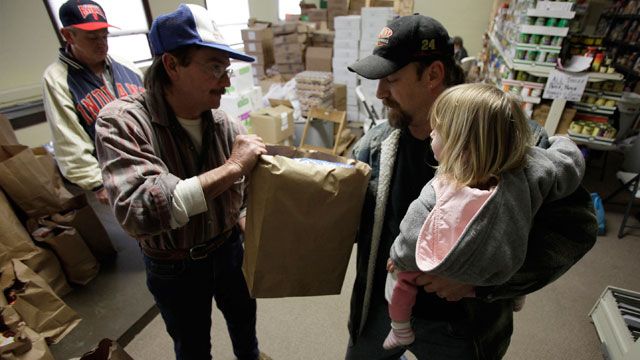First, the good news. A World Bank report released last week shows that extreme poverty is on the decline. The percentage of people living on less than $1.25 a day decreased in every region of the developing world between 2005 and 2008. The fall was so steep that the United Nations Millennium Development Goal of halving the number of people living in extreme poverty has been met before the 2015 deadline.
This is contrary to the World Bank’s own prediction that the global financial crisis would lead to “a substantial deterioration in conditions for the world’s most vulnerable.”
But, as The New York Times explains, market conditions actually favored developing countries during the recession.
Economists had theorized that the credit crunch and recession would cause a flight to the safety of developed nations. But shortly after the recession, with growth stagnating in countries like the United States and in western Europe, the world’s investors plowed money into emerging markets.
China was the biggest success story — the ranks of the dire poor there decreased by 700 million between 1981 and 2008.
The bad news hits closer to home. The World Bank study doesn’t even bother to measure poverty rates in developed countries such as the U.S., Western Europe and Japan. But a new study from The National Poverty Center shows that the number of U.S. households living in extreme poverty (defined here as less than $2 a day per person) more than doubled from 1996 to 2011. The number of extremely poor children also doubled during that time, from 1.4 million to 2.8 million.

“This growth has been concentrated among those groups that were most affected by the 1996 welfare reform,” the report states.
Arloc Sherman, a senior researcher at the Center on Budget and Policy Priorities, explains in a blog post:
The 1996 law replaced Aid to Families with Dependent Children, which primarily provided cash assistance to eligible families, with the Temporary Assistance for Needy Families (TANF) block grant, which provided states with a fixed level of funding which they could use for many different purposes. The report found that the rate of extreme poverty doubled for households overall but nearly tripled for female-headed households, which make up the bulk of the TANF caseload….
The sharp decline in the value of TANF benefits over time means that many TANF recipients remain extremely poor. Benefits are below half of the poverty line in every state. For a family of three, benefits are only about $2 per person per day in Mississippi and Tennessee and only slightly more than $2 per person per day in Alabama and South Carolina, for example.
Sherman’s piece is the first of a series of posts analyzing the new National Poverty Center numbers that the Center on Budget and Policy Priorities will present this week. You can read the rest on the Off the Charts Blog as they become available.
Yet another example of politically engineered inequality. In his now infamous “I’m not concerned about the very poor” interview, Mitt Romney promised that he’d fix the safety net for the poor “if it needs repair.” Looks like it might.

